Subscribe now and get our latest blog and video content delivered straight to your inbox.
How Does a Wood Burning Furnace Work?

Apr 26, 2024

Most homeowners rely on a natural gas furnace to heat their homes. In most cases, the furnace is already in the home when you buy it, and you don’t give it much further thought beyond adjusting the thermostat every now and again. But a wood burning furnace is also a viable, reliable way to heat your home.
Whether you know about wood furnaces or you’re just hearing about them for the first time, the principle is simple: instead of relying on outside natural gas pipelines to supply fuel, you throw wood into a firebox, light it, and the fire in the furnace heats your home.
While the principle is simple, the furnaces themselves can be pretty complex, consisting of several systems that work together to provide heat to every room of your house. At HY-C, we manufacture the Fire Chief FC1000E wood burning furnace. And, at its core, it consists of five modules that work in tandem to deliver heat:
- The ductwork connection point
- The chimney connection point
- The firebox
- The distribution blower
- The draft blower
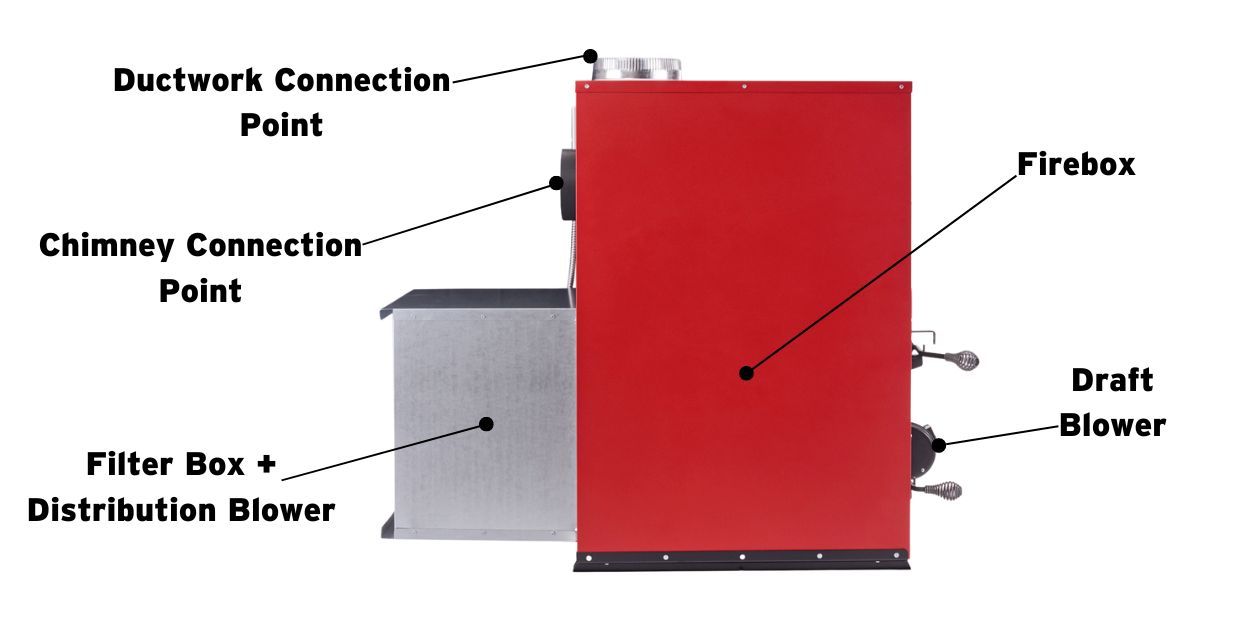
In this guide, we’re going to cover how each one of these systems work. We’ll explain where the fire is contained in the furnace, how heat gets delivered, how the smoke from the burning wood is safely filtered out of the home, and more.
By the time you’re finished here, you’ll know how a wood furnace works on a very general level. From there, you’ll be ready to decide whether or not you should get one for yourself.
Wood Burning Furnace Firebox
If you want to heat something, you first need a heat source. Obviously, wood burning furnaces burn wood as their heat source. The operator opens an insulated steel door, throws some logs in, lights them, and closes the door.
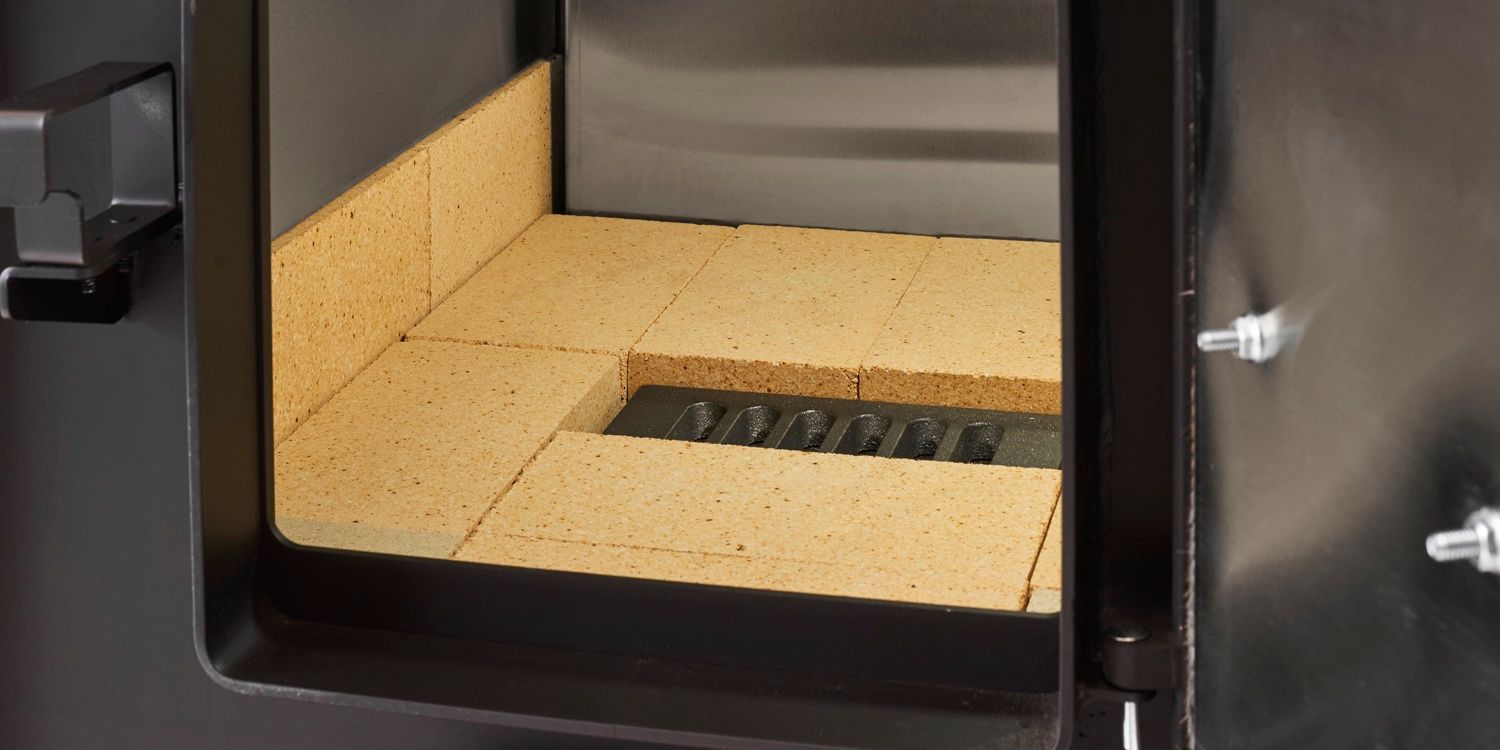
The steel firebox is lined with heat-resistant firebrick to shield it from damage and ensure proper heat transfer. A grate in the bottom of the firebox allows soot, ash, and other burnt materials to filter out. The firebox door seals tightly when closed, utilizing the same kind of braided gasket as an oven.
Wood Burning Furnace Hot Air Distribution
After you get a fire going in the firebox, heated air moves from the furnace, into your ductwork, and out of individual registers to warm each room of your house. But how is the warm air distributed? Fittingly, it’s pushed from the furnace and into your ductwork by way of a distribution blower.
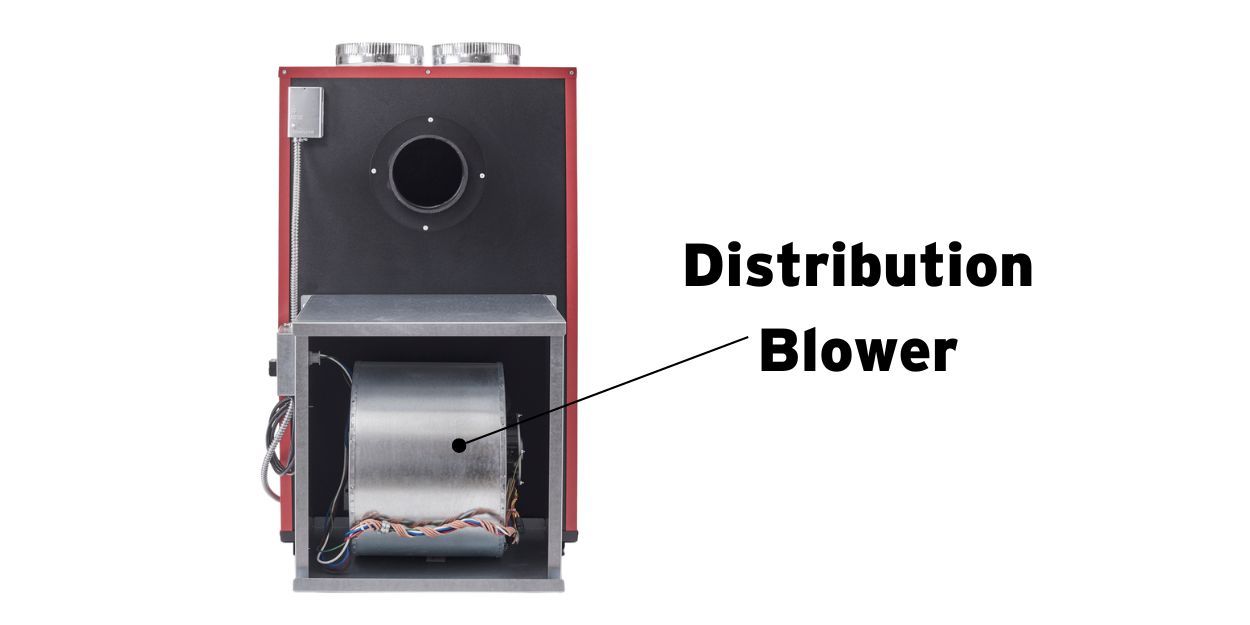
The distribution blower is typically installed in the back of the furnace. Note that it is in no way connected to the firebox where the wood burns. Instead, when the powerful distribution blower turns on, it blows air through the two silver ductwork attachment points at the top of the furnace and into your air ducts.
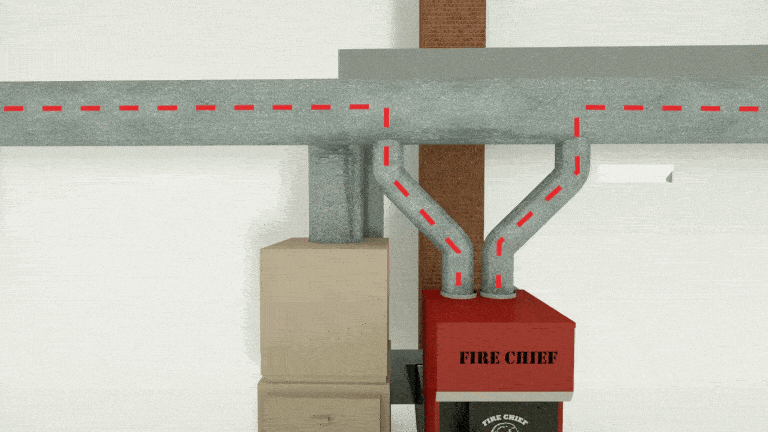
Warm air travels from the furnace, into the duct pipe, into your HVAC system, and then out into your home. At this point, though, you may be wondering how smoke doesn’t end up in your air ducts. And that’s where the chimney comes in.
Wood Burning Furnace Chimney
The chimney carries smoke, gasses, and other byproducts of combustion from the firebox and vents them out of the home. A chimney pipe extends from the furnace and into a chimney, which carries the smoke up and out (similar to a fireplace chimney).
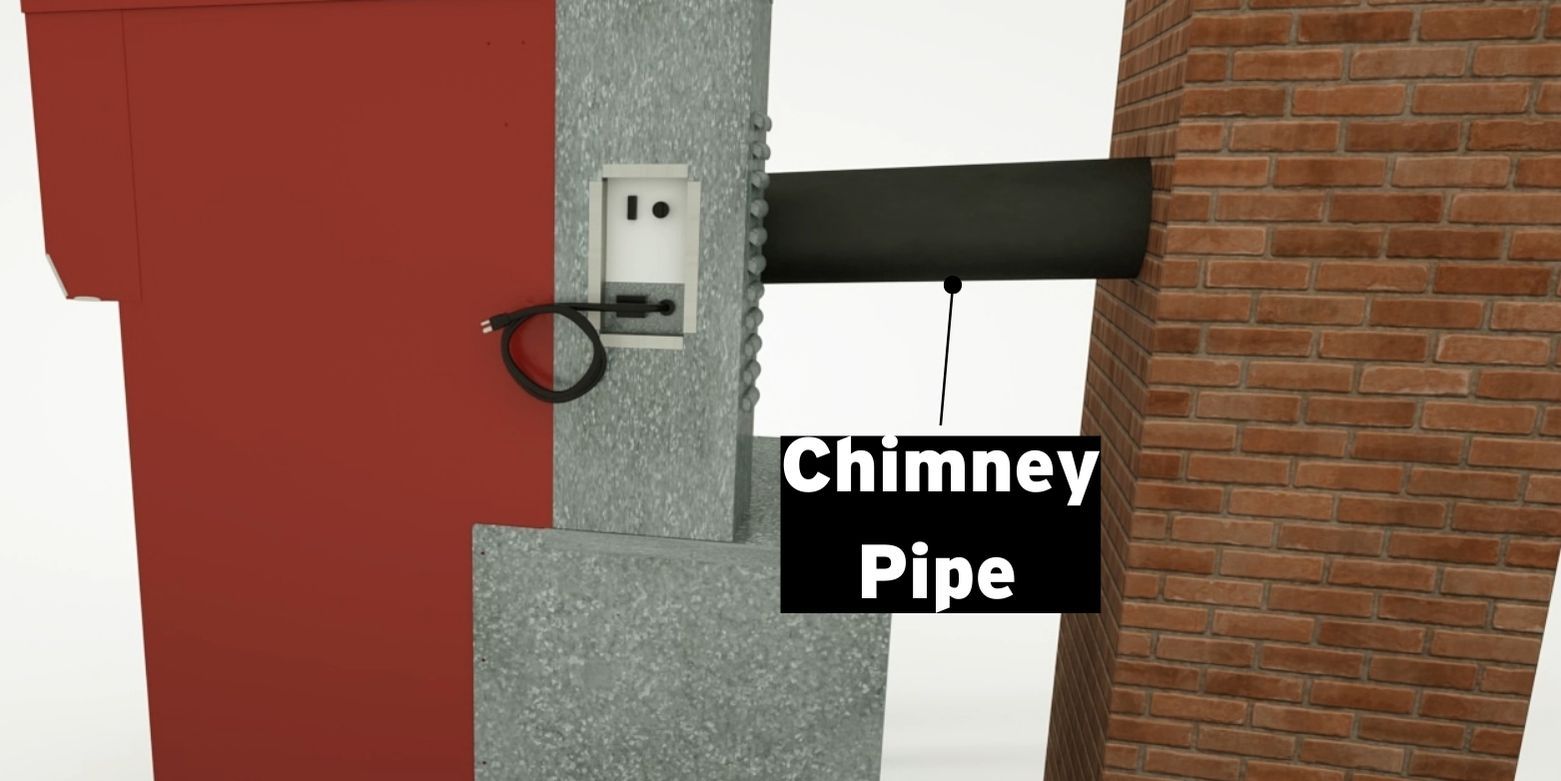
It’s important to understand that the firebox is completely sealed off from the rest of the furnace. The only way to access the firebox is through the air-tight front door where wood is loaded, or through the chimney.
The fire in the firebox heats air in an open space in the top of the furnace called a plenum. As that air is heated, the distribution blower pushes it into the home, while the chimney pipe vents out smoke, gas, and other particulates. This system keeps both the distributed air and the smoke separated, preventing smoke from entering your air ducts.
Wood Burning Furnace Draft Blower
Now that you understand the basics of how a wood furnace heats air and vents smoke, the only thing left to understand is how the furnace maintains a constant temperature in your home.
Similar to a gas furnace, wood burning furnaces utilize a thermostat that detects the ambient temperature in your home. When you set the thermostat to your desired temperature, the furnace adjusts its heat output to accommodate your request.
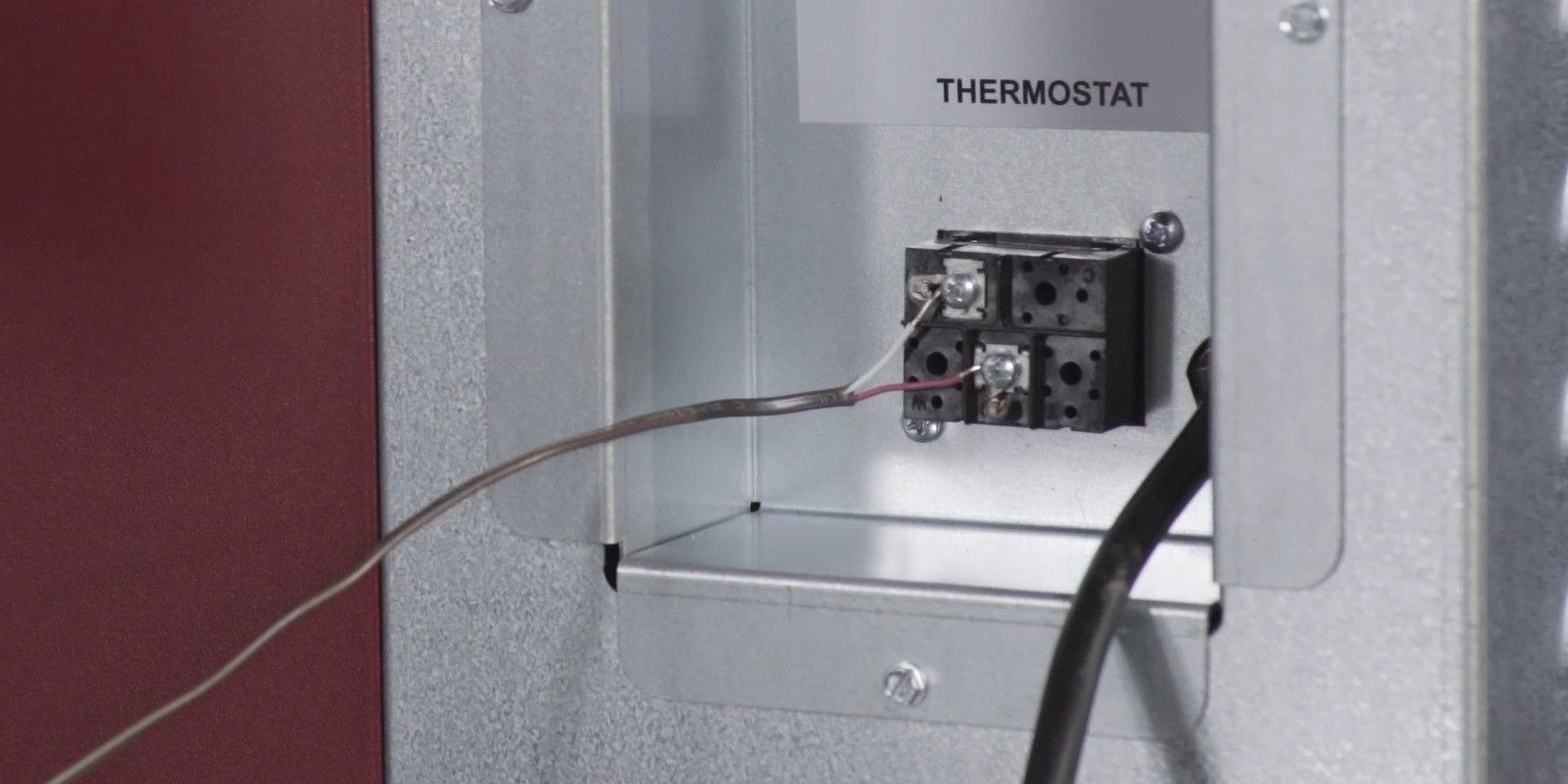
“But how,” you may be wondering, “does a wood burning furnace allow your home to cool off when you turn the thermostat down? After all, there’s a fire burning in the firebox. It’s not like natural gas — you can’t just turn a fire off.” And you’re right: the fire in the firebox needs to stay lit. But what we can do is control its intensity.
The distribution blower isn’t the only fan used on a wood burning furnace. There’s also a draft blower. This smaller fan is connected to your thermostat, and its only purpose is to blow air directly into the firebox, increasing the intensity of the fire.
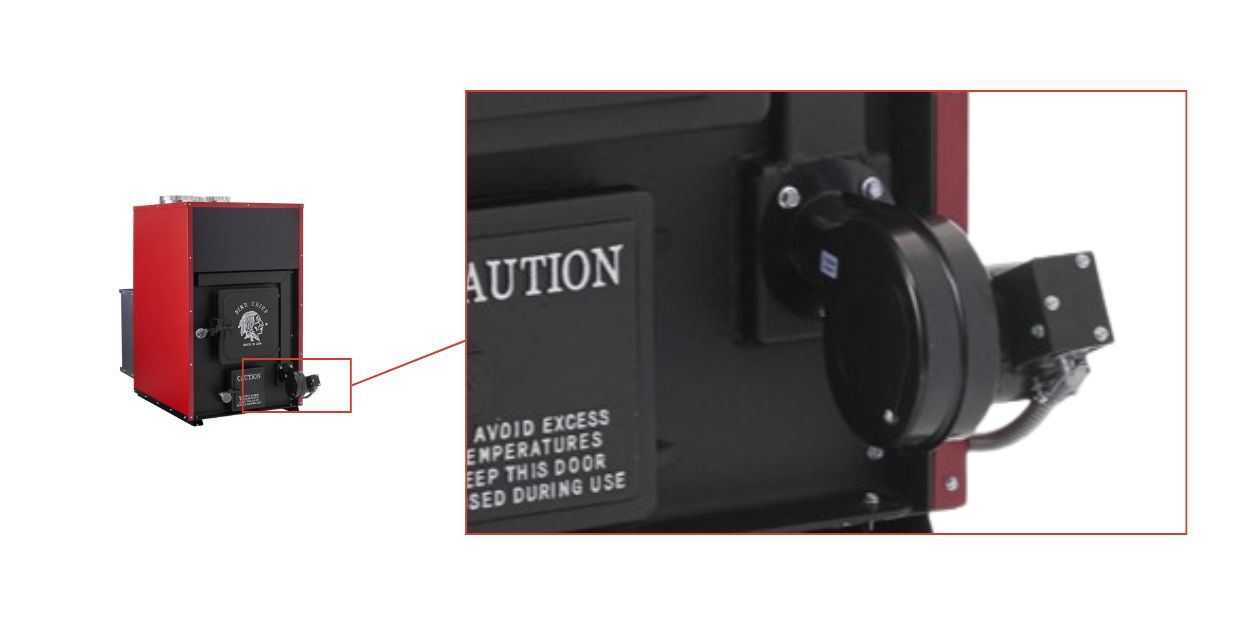
Let’s say the temperature in your home is 68 F, and you adjust your thermometer to 72 F. At that point, the draft blower on the furnace will kick on, blowing air into the firebox and stoking the flames. As a result, the air in the furnace will get hotter, and the distribution blower will distribute it throughout your home.
Now let’s look at it the other way. Say the temperature in your home is 72 F, and you adjust your thermostat to 68 F. At this point, the furnace will keep your draft blower off, allowing the fire to die down a bit. The distribution blower will also stop until your desired temperature is reached (at which point, it will kick back on as needed to maintain the correct temperature).
Should You Get a Wood Burning Furnace?
Now, you should have a basic, rudimentary understanding of how a wood burning furnace operates. The next question, though, is whether or not you should get one for yourself.
Luckily, we’ve covered this topic before. You can begin by finding out whether or not a wood burning furnace is right for you in the first place. You can also take a look around at some of the best wood burning furnaces on the market to learn the similarities and differences between them.
And, if you do feel like you’re ready to give wood heating a try, utilize the product locator below to find a Fire Chief FC1000E furnace dealer near you.

